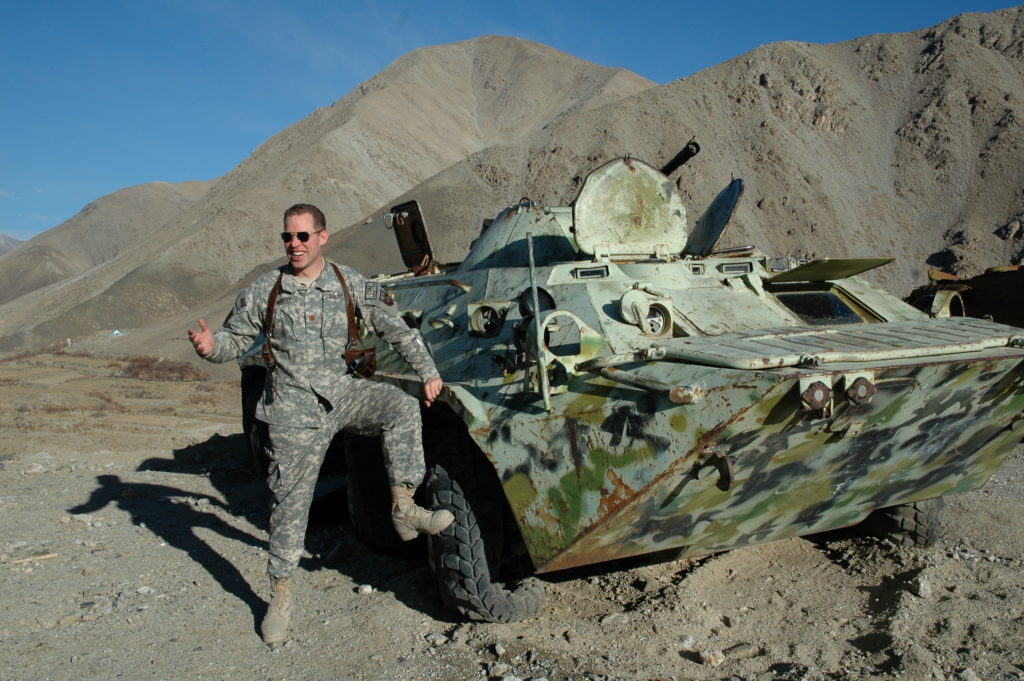As published in the Daily Caller: North of Kabul, high in the Hindu Kush mountains, sits Afghanistan’s Panjshir Valley. At 8,000 feet up, Panjshir successfully resisted the communists and then, later, the Taliban. It’s famous as the spot where U.S. forces first touched down to team up with the Northern Alliance in 2001.
By the time I visited Panjshir as a mid-grade U.S. Navy officer in 2010, the province’s governor, Keromaddin Karim, proudly boasted of the many achievements his province, including 14,000 girls in schools, a vibrant farm community, and $100 million in Western investment. He added with a grin that, “Every self-respecting Panjiri has a Soviet tank in the yard!”
It was true. As my convoy left his province we saw many old Soviet tanks and armored personnel vehicles littering the valley.
I remember thinking, how could an evacuating army leave so much equipment behind?How embarrassing .
Then I watched the fall of Kabul in 2021.
The humiliation of America’s Afghanistan withdrawal made the Soviet’s 1989 retreat look like a triumph. The chaos and bloodshed of the United States fleeing the country looked more like the British evacuation of Kabul in 1842, where 16,000 troops were crushed by a ragtag Afghan militia.
America left behind $8 billion worth of equipment and $2 trillion in lost investment, not to mention the loyal Afghans and allied nations that came to our defense after 9-11. (RELATED: MORGAN MURPHY: Joe Biden Has Wrecked Our Military Like A Cheap Rental Car)
Worse than the fall of Saigon, images from the fall of Kabul showed desperate Afghans plummeting to their deaths from C-130 cargo planes and runways choked in chaos.
As the Taliban celebrated, I grieved for the 20,713 Americans injured in Afghanistan and the 2,402 who gave their last full measure of devotion to freedom. I called and checked in on my shipmates who served there. Each was depressed, disgruntled, and dispirited —emotions I suspect were shared by many of the other 832,000 Americans who gave up months and years of their lives to serve in Afghanistan.
My sense of loss was compounded by the fact that I’d been in Afghanistan in December 2020, just eight months earlier. I’d visited as the DoD’s press secretary to Secretary of Defense (acting) Christopher Miller. We’d flown into Kabul to visit troops and meet with Afghanistan’s last U.S. commander, General Austin S. Miller.
In the last month of the Trump administration, with just 2,500 American boots on the ground, Afghanistan was peaceful enough for the Secretary of Defense to not only visit Kabul, but transit to a forward operating base and greet the troops for Christmas. The SecDef and his entourage don’t exactly make for a small target, but there wasn’t a single hostile casualty in the eight months preceding our visit.
By contrast, when I’d flown into Afghanistan in 2010, America had 120,000 forces in country and 40 of us were being killed each month. Just landing at the airport was so dangerous the Air Force pilot drove the plane down nearly vertical to the runway in what’s euphemistically called an “assault landing.” In my post-DoD role on Capitol Hill, my place of work was guarded by 26,000 troops post January 6th. The mere 2,500 in Afghanistan were a pittance by comparison.
Unlike the British retreat 181 years ago, America’s Afghanistan defeat wasn’t at the hands of its commanding generals; it came at the direction of its commander-in-chief. The United States’ new president, Joe Biden, in office for less than three months, ordered a complete withdrawal of American troops from Afghanistan by the 20th anniversary of September 11th.
This withdrawal date didn’t come from his commander on the ground, General Austin Miller, the commander of Central Command, General Frank McKenzie, or even his senior-most military advisor, General Mark Milley.
It likely came from a communications or campaign staffer, or perhaps Biden himself. We may never know. Regardless, it showed a staggering lack of judgment.
This week, as I watched for a second time as the Taliban paraded our military equipment in jubilant triumph through Kabul, I could not help but think back to the tanks in Panjshir.
Now there’s a Soviet tank and American Ford Ranger in every Afghan’s yard.

